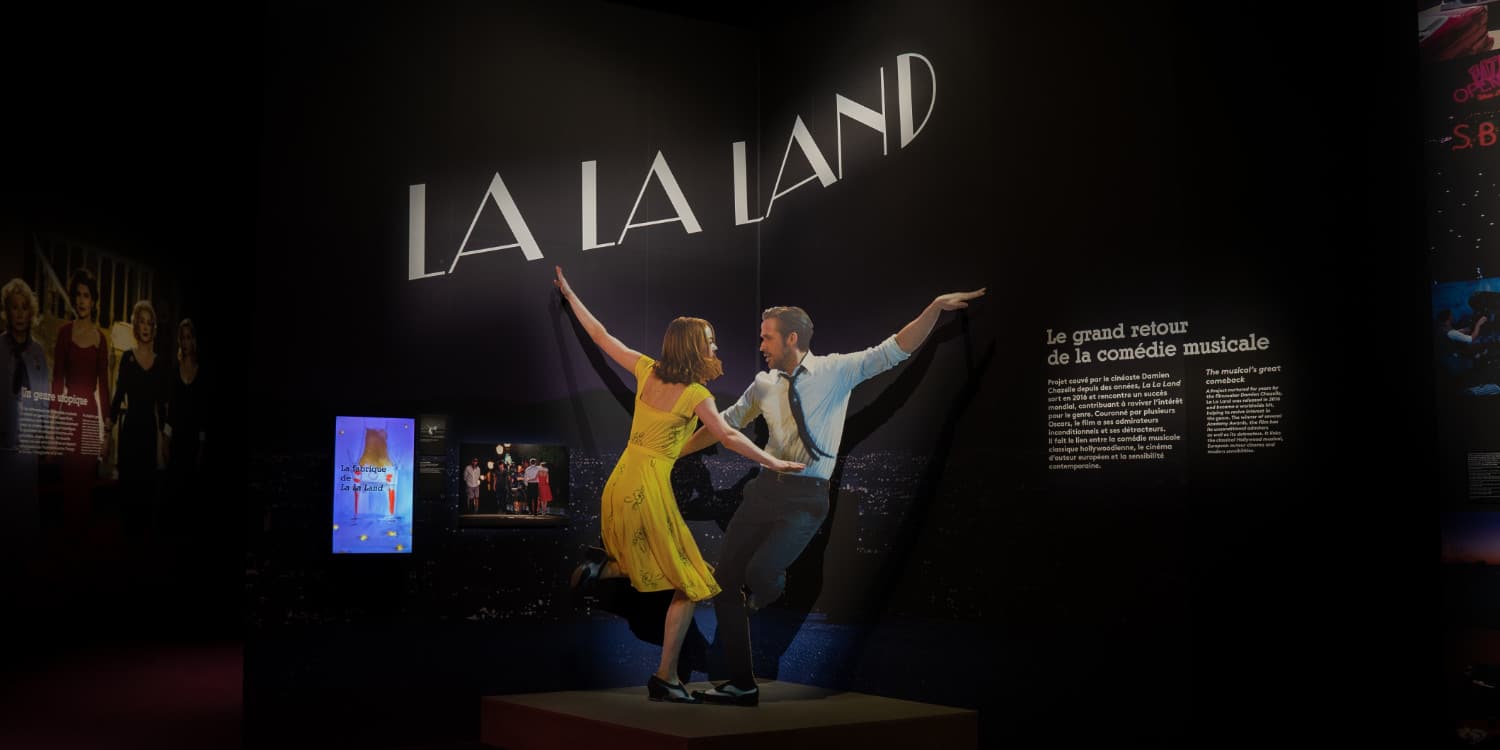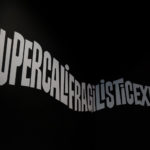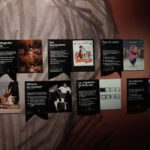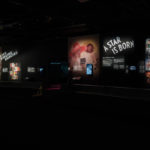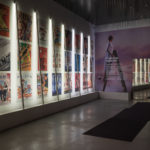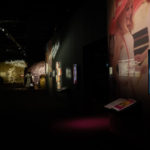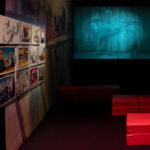Teo: The Cité de la Musique – Philharmonie de Paris is a leading cultural centre in France dedicated to music, housed in two iconic architectural landmarks designed by Jean Nouvel and Christian de Portzamparc. What makes your institution different in the landscape of music-focused cultural institutions?
Jade Bouchemit: The Philharmonie is a hybrid multifaceted institution headed by Laurent Bayle which encompasses l’Orchestre de Paris, the concert department with classical and modern music, with national and international orchestras and bands, the education department and the museum headed by Marie-Pauline Martin. This creates many synergies, where the concert department and the museum can capture each other’s audiences. We thus attract audiences who enjoy live music but who have not necessarily considered exploring it in a museum context. This also enables us to continuously question music in its natural expression – live – and to have that link with the essence of instruments, which is to be played, to be listened to. In our galleries, visitors can listen to, touch and use the instruments, and in our exhibitions, sound is central. We have strong expertise in the display of sound and its connection with other sensorial dimensions.
Also, our museum is not a just a musical instruments museum. We are a national museum with a very rich permanent collection, a leading research lab, a dense programme of temporary exhibitions and a large portfolio of touring exhibitions.
What is above all quite unique about our institution is our very rich music-focused offer which, across all programmes, really covers the whole musical field, from classical music to current musical genres, presenting Western as well as non-Western works. This is reflected in our touring exhibitions, which explore a broad spectrum of music topics, with, for instance, productions dedicated to Jamaican music, Arab music, Electro, and soon Hip Hop music.
The versatility of the institution and its programmes, and even the choice of your location in the city, seem to reflect a particular attention to inclusivity. Do you have a particularly inclusive approach to music education at the heart of the institution?
It is even the starting point for the institution. Inclusivity of audiences is what drives the diversity of genres presented at the Philharmonie, as well as our presence on the border of the city. Our goal is to bring together amateurs and specialists, young and old, people from Paris and from other areas, in a centre for all. And a centre for all needs to feature all genres of music, in ways that truly render them, without museumifying them. As part of this approach, we have also always made accessibility a priority, and continuously explore innovation.
By taking exhibitions beyond our walls, we are giving them the possibility to go beyond the framework in which they were designed. [...] Touring provides an opportunity for exhibitions to be re-examined.
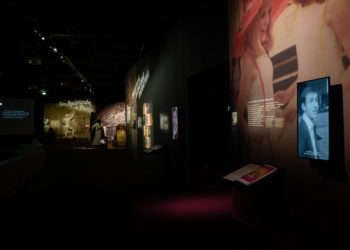
How do touring exhibitions sit in that approach?
Touring is an integral part of this diverse and inclusive approach. Taking our content outside of Paris is key. First around our country, as part of our public service mission. Then internationally. We want to engage with the world, and music has this power as a medium to engage immediately beyond borders, languages and differences. It can gather around a shared emotion.
By taking exhibitions beyond our walls, we are giving them the possibility to go beyond the framework in which they were designed and presented in the first place. When we create an exhibition, we have spatial, cost, and geographical constraints, so we make curatorial choices. Touring provides an opportunity for exhibitions to be re-examined.
It is important for us not to be in a position of “the person who knows”, who brings an all defined exhibition as a monolith that will not move anymore. Some international partners use an expression which I really like, “they arrive with their nose up”, when talking about other cultural partners who have that attitude. It’s fundamental to our mission to take this approach beyond borders, to create partnerships, reinvent ourselves and embed our organisation in truly international networks. The shows we present come from all around the world; the Paris Orchestra travels everywhere. We have the same ambition for our exhibitions.
Your touring exhibition Musicals: a glorious feeling, was presented at the Museum of Image and Sound (MIS – Museu da Imagem e do Som) in Sao Paulo from November 2019 to February 2020. How do you envisage such international collaborations with hosting institutions, which give new life to your project?
What is essential for us for international curation is to adapt as a team, and to adapt the exhibition itself. First, we need to be accommodating, to find solutions with the partner team and be of real support. This means, for instance, accepting that some of the elements featured in our original exhibition can be of less interest to the host.
The exhibition then needs to be adapted at several levels. Firstly, we adapt it to the local context, the country, its history. An exhibition, whatever the focus, will not be the same in China, Brazil, the United States or France. Secondly, we adapt the project to the identity of the partner. We do not have the same exhibition in a music museum or in an image and sound museum, as for our collaboration on Musicals in Brazil, or a design museum, as is the case with Electro in London. Where music is going to be central to us, for other museums, music may be a little less central to their editorial line. The third level of adaptation, which can often be forgotten, is what is simply doable. We need to have a dialogue about space, hosting, financial resources, and, should any issues arise, find solutions to these with our partners.
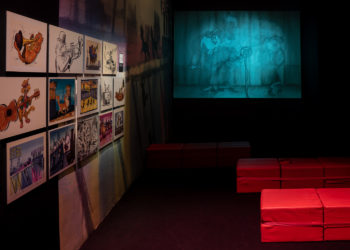
There has been extensive dialogue to integrate local content and create the adaptation in a way that did not distort but rather complemented and enhanced the original project.
How was the curation with the Museum of Image and Sound on Musicals designed to engage audiences locally?
The exhibition in France was very much focused on Hollywood musicals. For Brazil, the idea was to expand on these, as they have strong international resonance, and add local content. Brazil, like many countries, has a genuine musicals culture, with popular movies, actors, dancers, and directors. Iconic directors such as De Barros, Wallace Downey or Amácio Mazzaropi spring to mind, as well as Carmen Miranda, a famous Brazilian actress and dancer, who had an entire room dedicated to her.
As the MIS is dedicated to Sound and Image, the exhibition was already a natural fit for them. But identity is more than that. It’s also a way to present things and we supported the local team in doing that. There has been a beautiful collaboration between N. T. Binh, the curator of the original exhibition in Paris, and Duda Leite, the local expert who curated the Brazilian content, which was not simply added to the original content. There has been extensive dialogue to integrate local content and create the adaptation in a way that did not distort but rather complemented and enhanced the original project. The new exhibition had twice as much content. It went beyond what we achieved in Paris, giving a more global vision of what musicals are, bringing to light even more that it is not only a North-American matter.
Did you tailor other elements of the exhibition, such as design?
The design is always adapted for our exhibitions. Either with an adjustment of the original concept to the new site and its constraints, or with a completely new concept created by a new designer. Musicals was redesigned by local designers for its presentation in Sao Paulo.
Audiovisual components, which are naturally a major part of the exhibition, were also a key focus for adaptation. We do not just provide original exhibition files. Our teams fully recurated video content to bring in the Brazilian stories. They also had to perform extensive work in video synchronisation and rethink the distribution and calibration of images, sound and subtitling for completely different rooms, with different equipment and content.
With regard to the rights, it is also always a dialogue that leads to a fully tailored collaboration. For this project, the MIS managed the film rights, while we took care of the image rights. But often our service includes all rights clearance and management. We actually manage the rights ourselves directly with the rights holders, who prefer to deal with only one party. They know us, which makes it easier for them and the partners do not need to handle the rights.
We now have real demand to take the exhibitions to where the audiences actually are. If people are travelling less, we need to take the exhibitions to them. [...] We need to bring the international to the local, and make it possible for audiences to visit exhibitions that they would not have otherwise discovered.
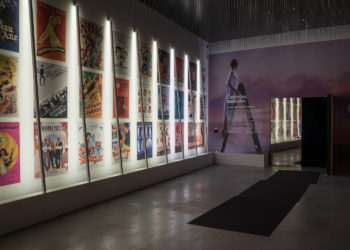
What do you feel is crucial to the success of such a collaboration between international teams?
We work differently with people from different regions. We do not have the same work methods and paces or administrative operations. We adapt, with a lot of dialogue and understanding. I think it is crucial to actually go and visit the site and meet the teams, because once you have seen your peers in their own setting, then you understand them better and accept more easily the difficulties they can face.
To be attentive, benevolent and, above all, to demonstrate flexibility and trust and confidence is crucial. Trust and confidence is telling yourself that they know. If they say deadlines are fine, you have to believe them, and you have to unite your teams with that trust that you have built.
What is your perspective on the future of travelling exhibitions in these Covid times?
I am quite enthusiastic. There is a growing demand for such flexible approaches. It shows that there is a growing opening to international peers and cultures. In the complex context we live in, where science and culture are often in jeopardy, both politically and economically, it is vital for cultural institutions to join forces to propose strong, meaningful content, which could make things evolve. There is something beautiful about it. It gives hope.
I also feel that with the crisis we are going through, when the first reaction could be to feel that touring exhibitions are going to be complex because we associate them with travel, actually we should associate them with a reduction in travel. Because rather than making an artwork travel away and come home every time, well thought-out tours can build itineraries which effectively reduce travels for the work.
Also, we could think that touring would be less relevant. On the contrary: we now have real demand to take the exhibitions to where the audiences actually are. If people are travelling less, we need to take the exhibitions to them. I do not know how things will evolve, but we need to bring the international to the local, and make it possible for audiences to visit exhibitions that they would not have otherwise discovered. Touring exhibitions can truly bring opportunities to engage with a wider spectrum of content, and this is even more essential in today’s context.
Hosting "Musicals": a word from the MIS
"The experience of bringing the show Comédies Musicales to the São Paulo Museum of Image and Sound (MIS – Museu da Imagem e do Som) was deeply rich in several ways. Not only because its content is completely connected with the language and philosophy of MIS, but mainly because of the possibility we had to expand the exhibition, in line with the curatorship developed by the Philharmonie de Paris, including a lot of Brazilian content. It was an excellent opportunity to delve into a really current cinematographic genre in Brazilian culture and to be able to present this to the audience alongside the entire trajectory of the genre in the world. The success was notable, both for those already familiar with the theme, who could recall their own memories, and for a new audience that discovered some of the many facets of musical cinema."
Cleber Papa, Cultural Director of the Museum of Image and Sound in Sao Paulo
Button Text
